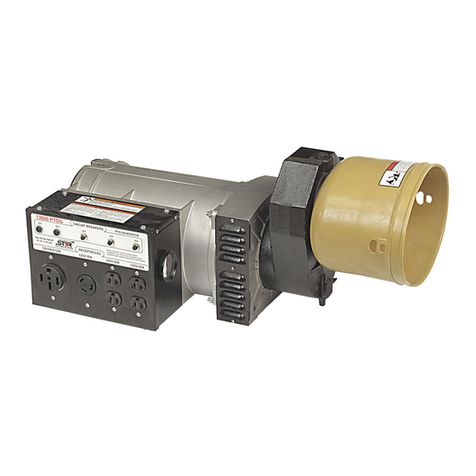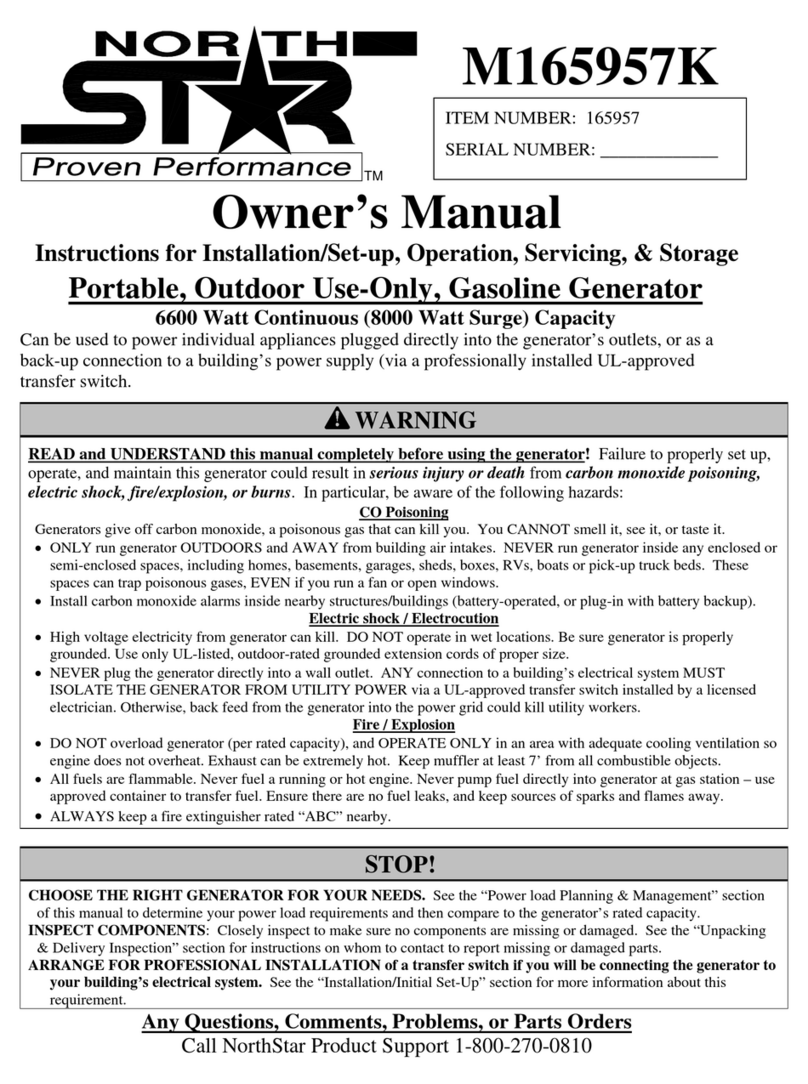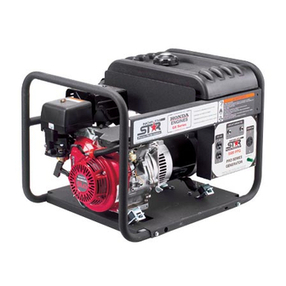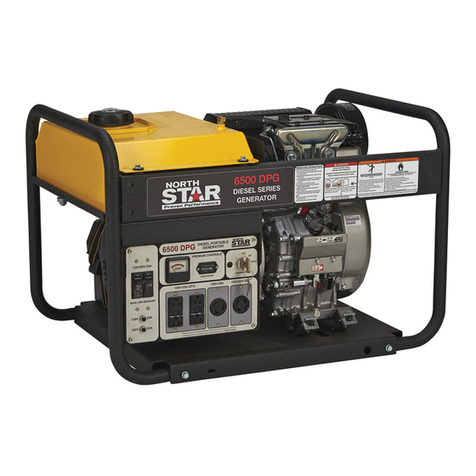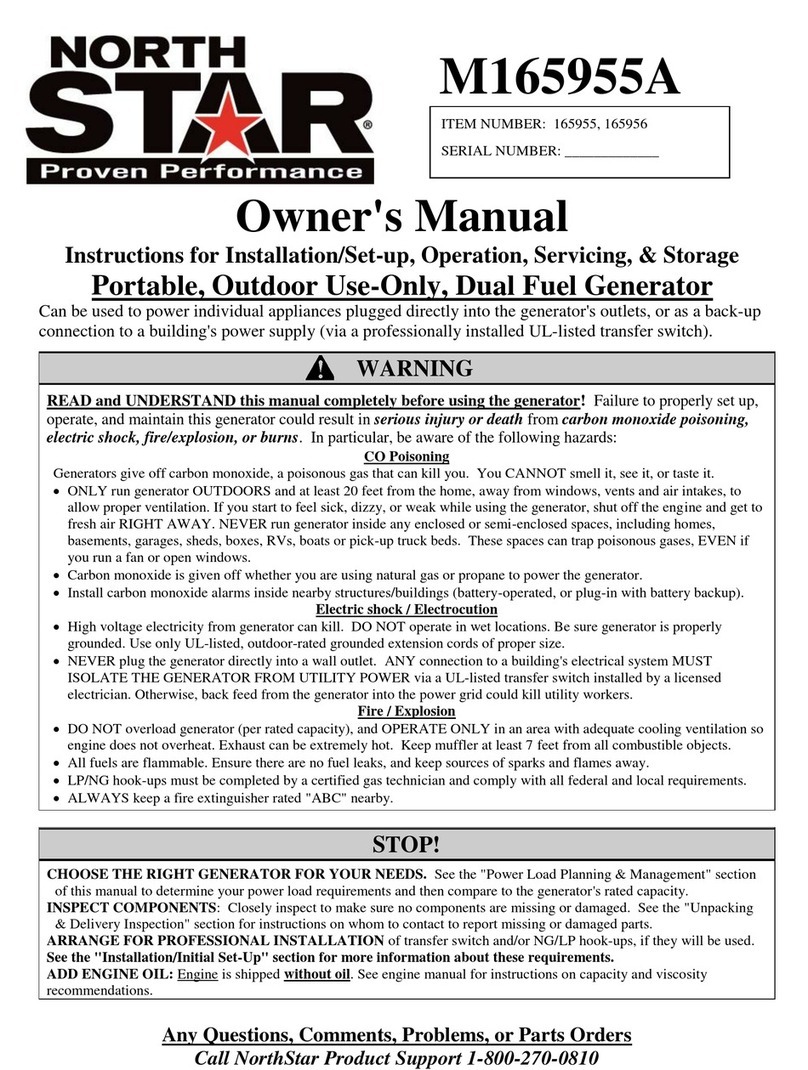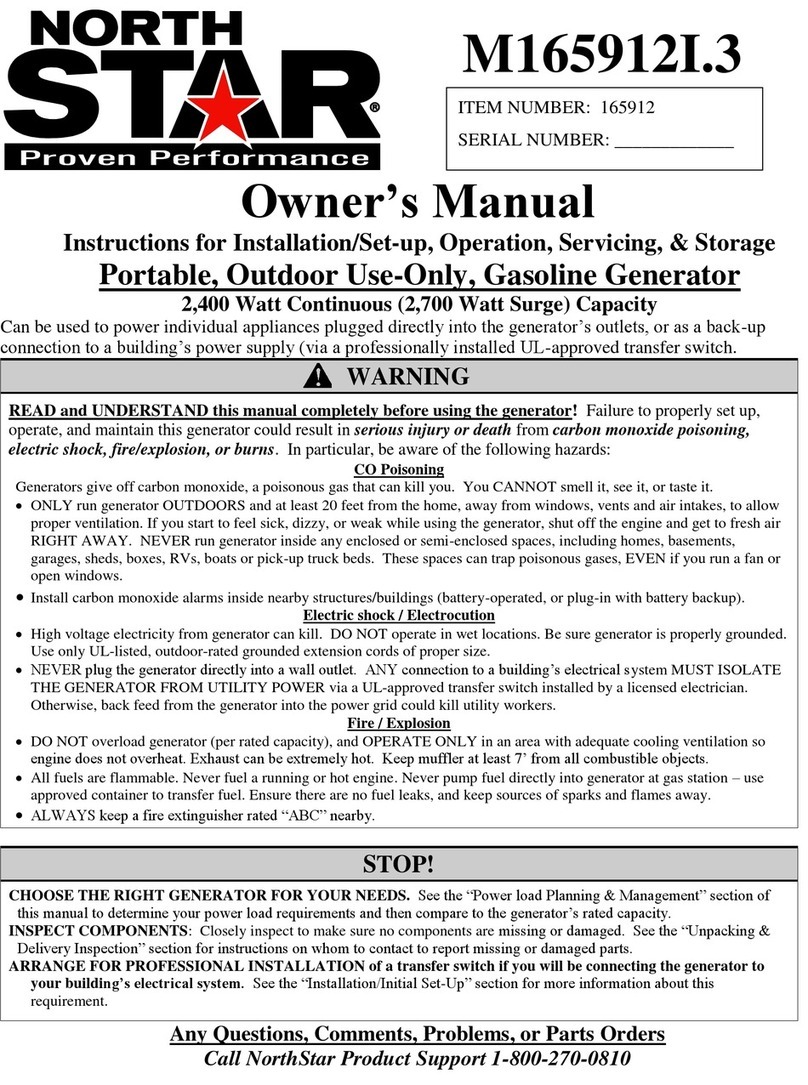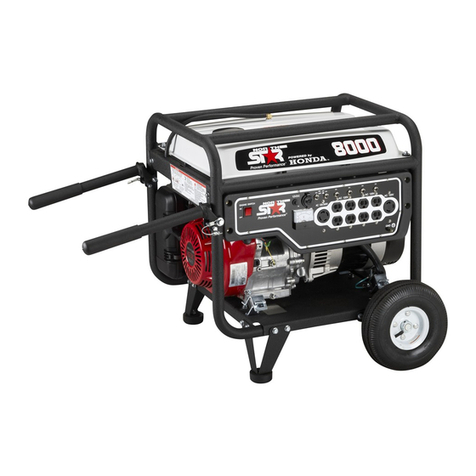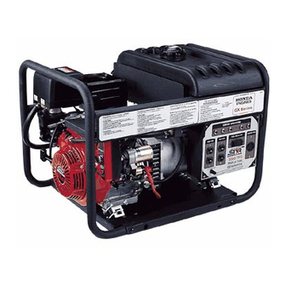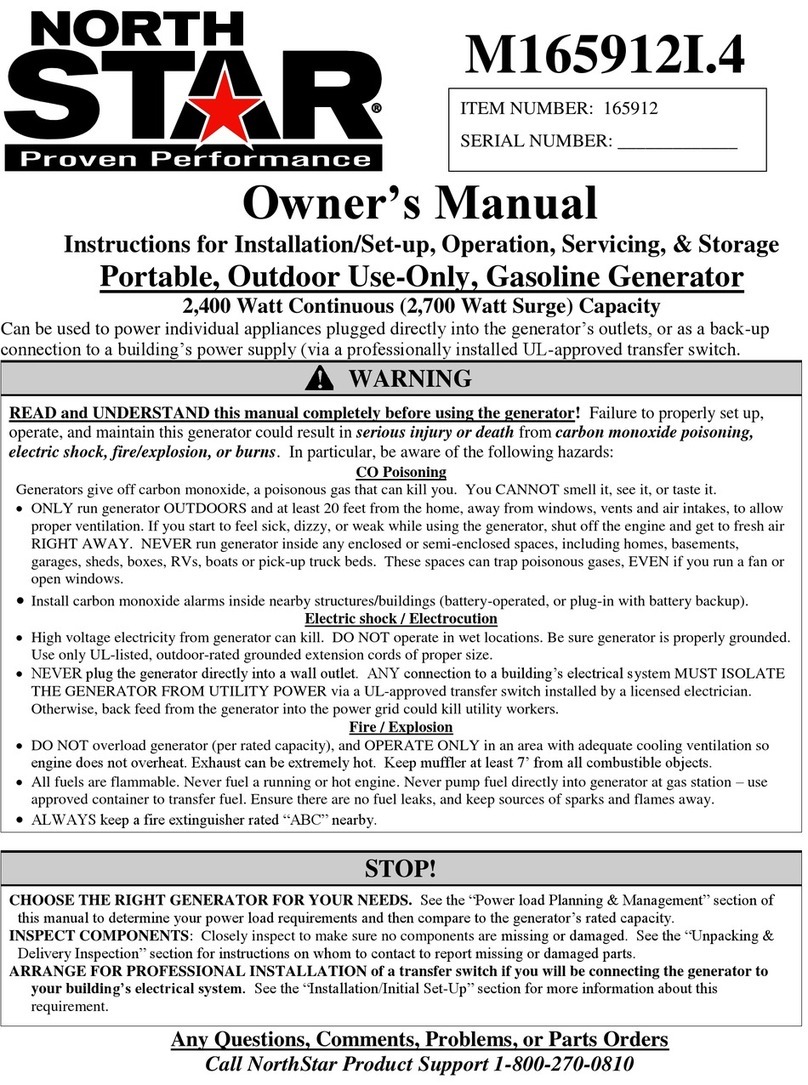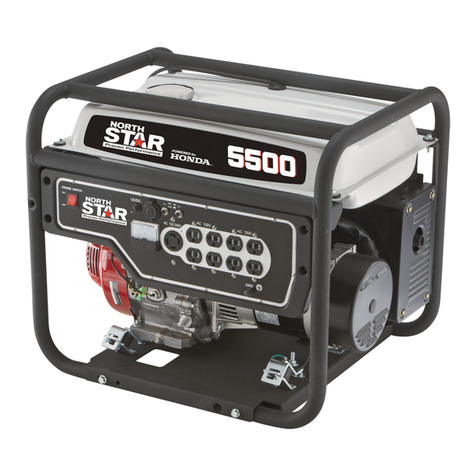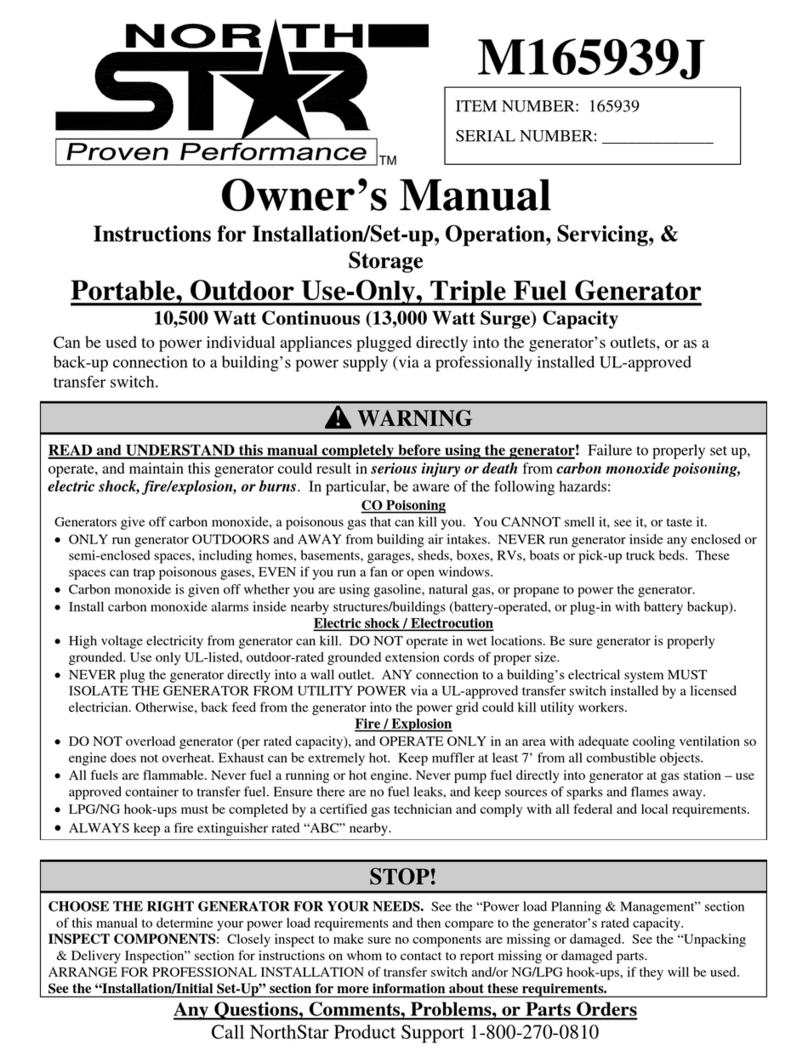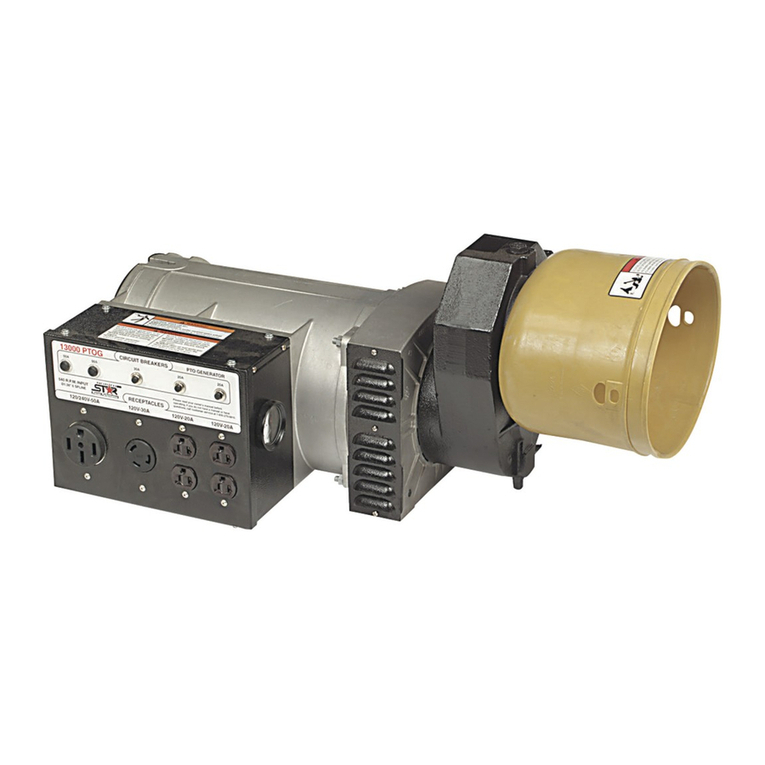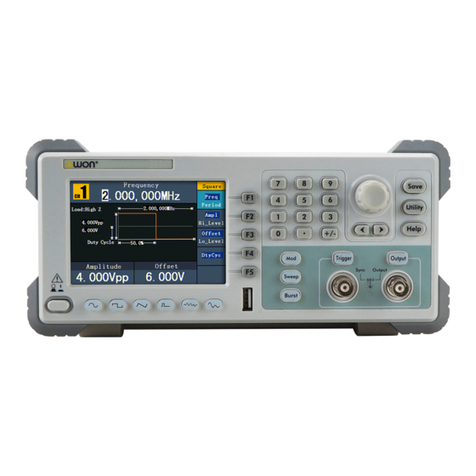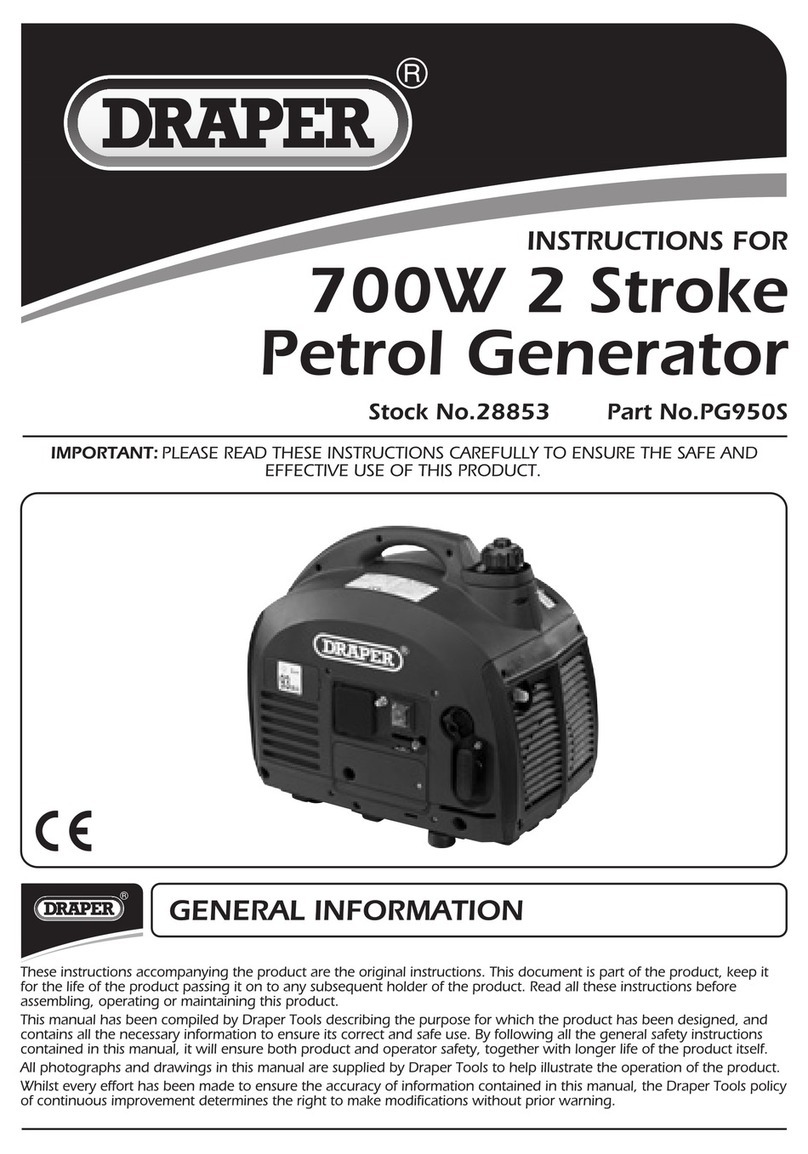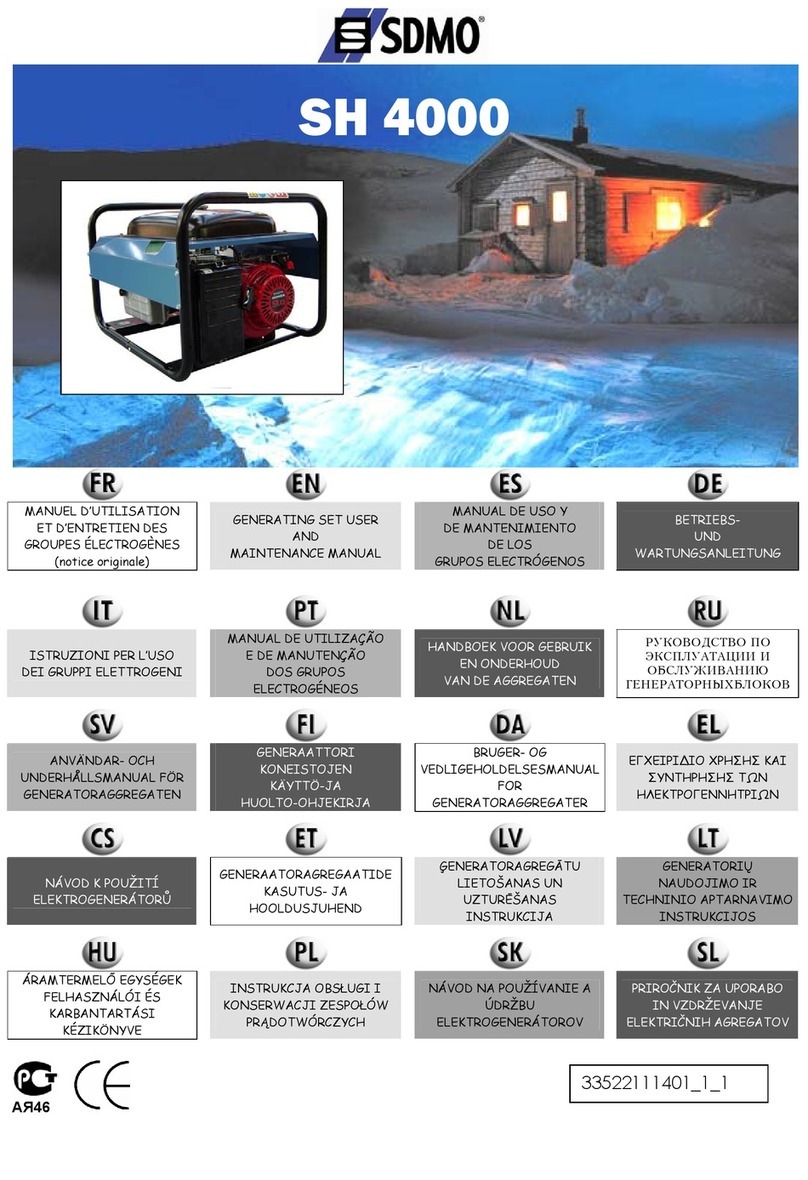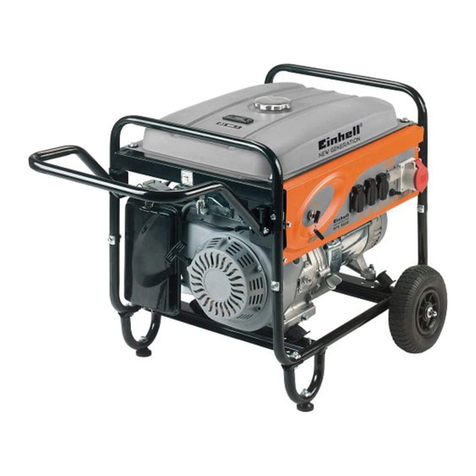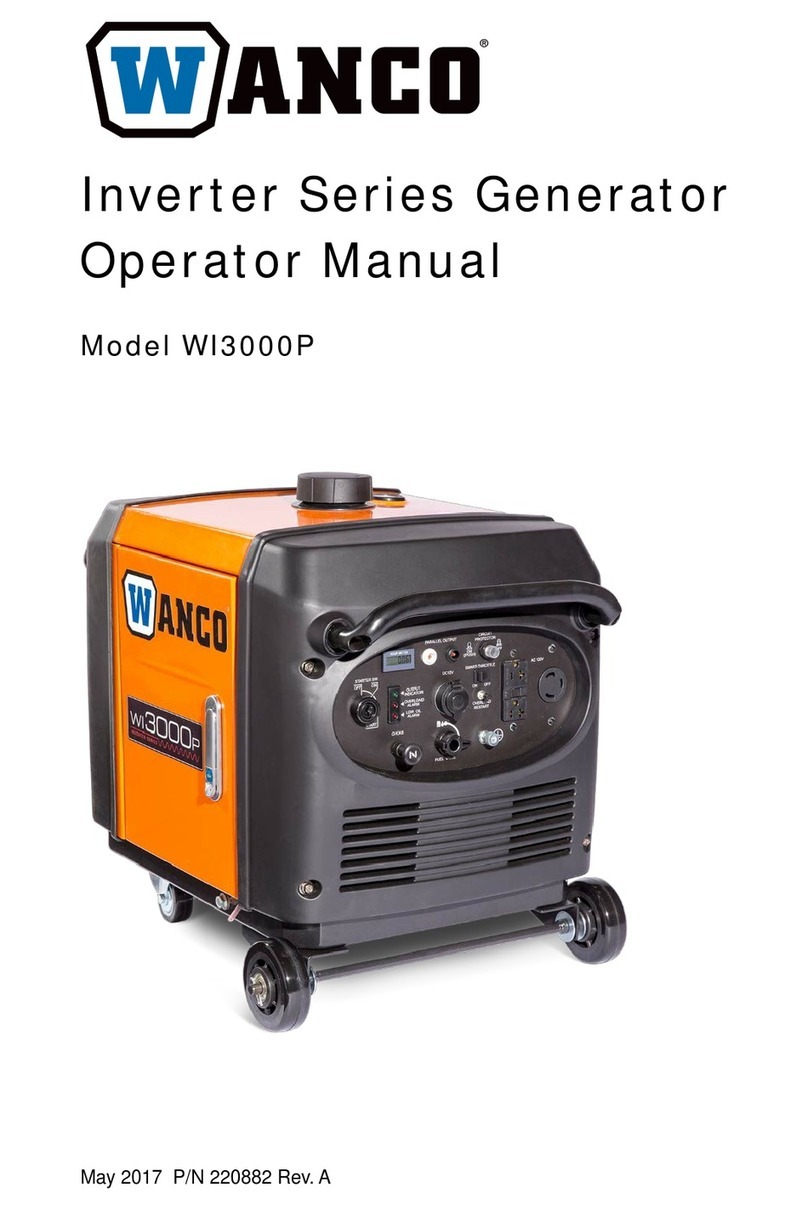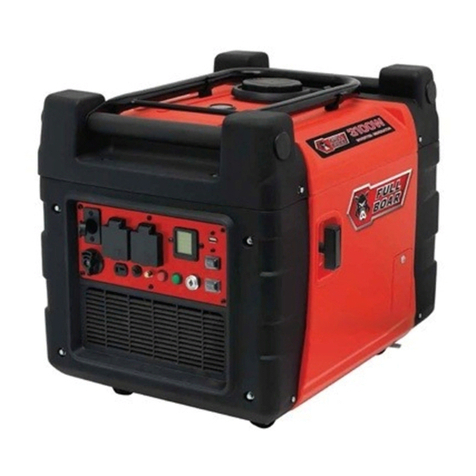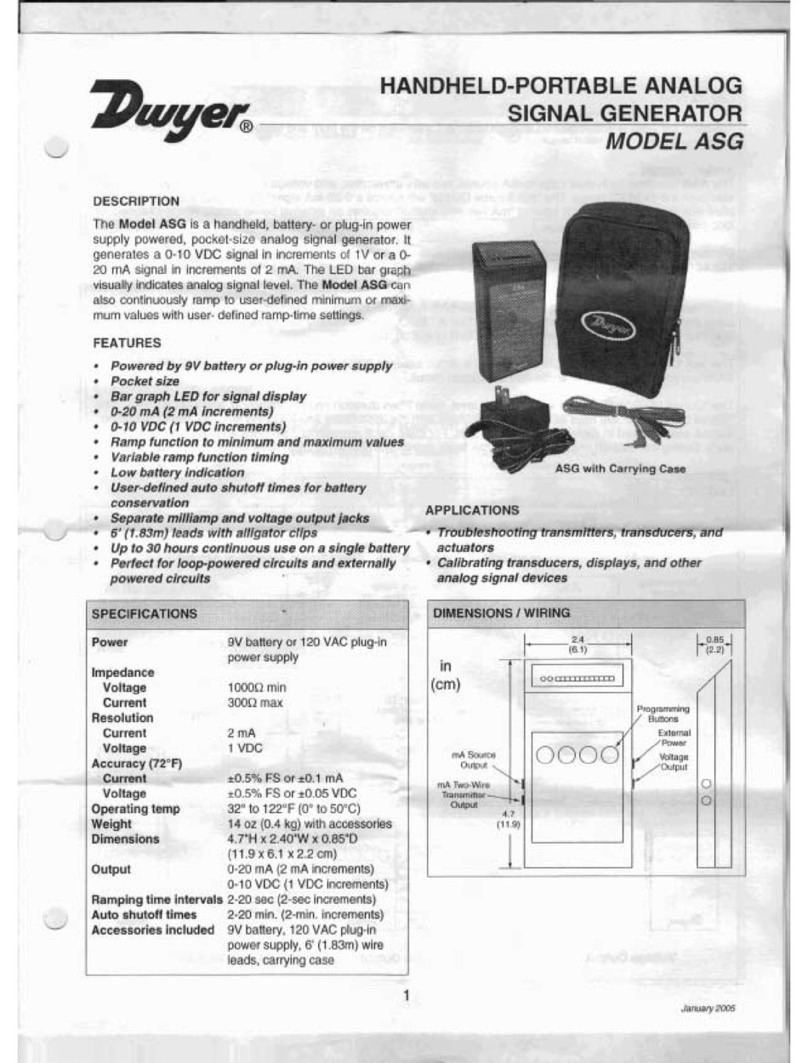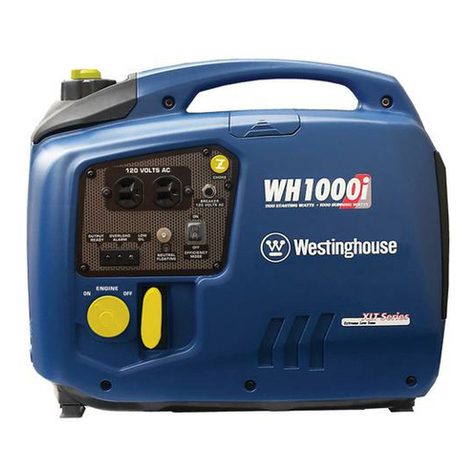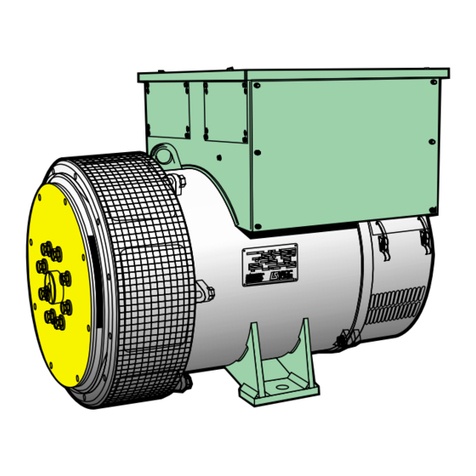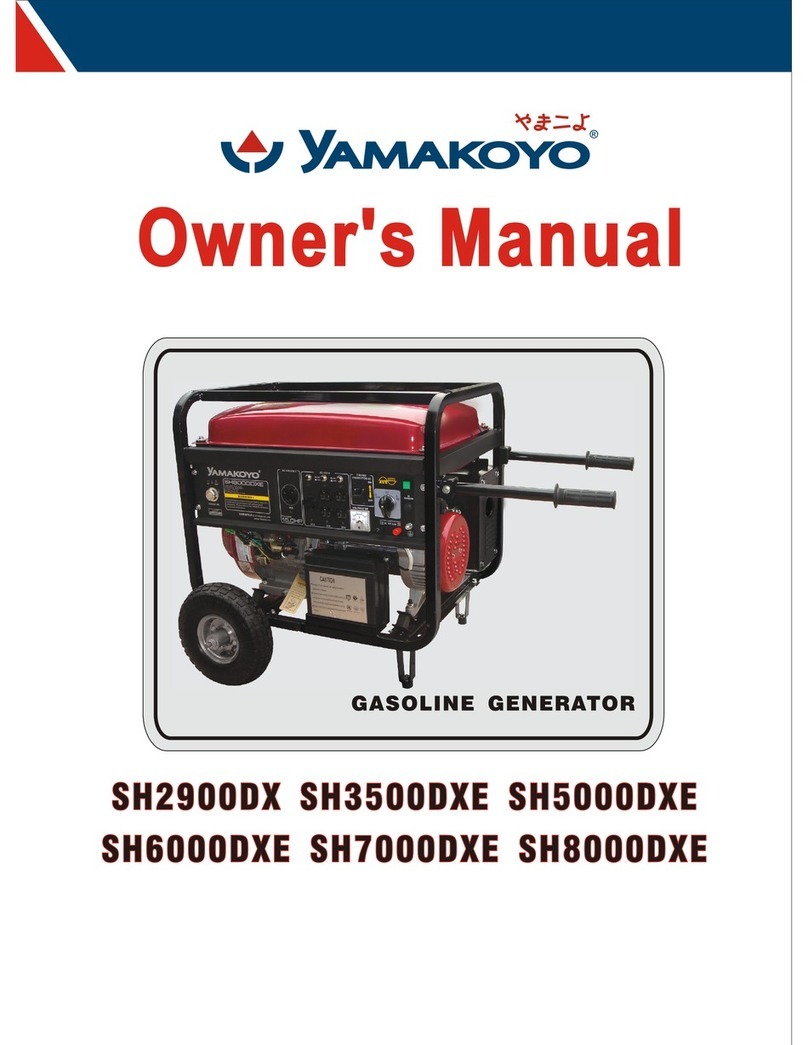
6
LOAD APPLICATION
Itisimportanttodetermine the total electrical load
beforeitisconnected to thegenerator. Thetwo major
factorsindetermining the life of a generator head are:
heat build-up, caused by overloading the generator
and corrosive contaminants that attack the wiring
insulation. If the generator is overloaded, the wires
become excessively hot and cause the insulation to
break down, reducing its ability to resist corrosive
contaminants. Over time the effectiveness of the
insulation iseliminatedanda dead short can result.
Always compare the generator nameplate data
with that of the equipment to be used to ensure that
watts, volts, amperage, and frequency requirements
are suitable for operating equipment. The wattage
listed on the equipment nameplate is its rated output.
However, some equipment may require three to ten
times more wattage than its rating on the nameplate,
as the wattage is influenced by the equipment
efficiency, power factor and starting system. NOTE: If
wattage is not given on equipment nameplate,
approximate wattage may be determined by
multiplying nameplate voltage by nameplate
amperage.
VOLTS X AMPS = WATTS
Example: 120V X 5A = 600W
When connecting a resistive load such as
incandescentlights, heatersor common electric power
tools, a capacity of up to the generator full rated
wattage outputcanbe used.
When connecting a resistive-inductive load such
as a fluorescent or mercury light, transformers or
inductive coils, a capacity of up to 0.6 times the
generator full ratedoutputcan be used.
Always allow the generator to reach operating
speed before a loadisapplied.
STARTING ELECTRICMOTORS
Electric motors require much more current (amps)
to start than to run. Some motors, particularlylow cost
split-phase motors, are very hard to start and require 5
to 7timesmore currentto start than to run. Capacitor
motors are easier to start and usually require 2 to 4
timesasmuch current to start than to run. Repulsion
Induction motors are the easiest to start and require
1.5to2.5timesasmuchto start than torun.
Most fractional motors take about the same
amount of current to run them whether they are of
Repulsion-Induction (RI), Capacitor (Cap), or Split-
Phase (SP) type. The following chart shows the
approximate current required to start and run various
types and sizes of 120 volt 60 cycle electric motors
under variousconditions.
120V,60 HzMotors Starting Amps
Hp motor Running
Watts RI type Cap type SP type
1/6 525 7-11 9-18 16-22
1/4 700 9-15 12-23 22-32
1/3 875 11-18 14-29 26-35
1/2 1175 15-25 20-40 NA
11925 24-40 32-64 NA
1 1/2 2400 30-50 40-80 NA
22900 36-60 48-96 NA
3 4075 51-85 68-136 NA
56750 84-140 112-224 NA
The figures given above are for an average load
such as a blower or fan. If the electric motor is
connected to a hard starting load such as an air
compressor, it will require more starting current. If it is
connected to a light load or no load such as a power
saw, it will require less starting current. The exact
requirement will also vary with the brand or design of
themotor.
Generators respond to severe overloading
differently thanthe power line. When overloaded, the
engineisnotable tosupply enough powerto bring the
electric motorup to operating speed. The generator
responds to the high initial starting current, but the
engine speed drops sharply. The overload may stall
theengine. If allowed to operate at very low speeds,
the electric motor starting winding will burn out in a
short time. The generatorhead winding might also be
damaged.
Running thegenerator underthese conditionsmay
resultin damage to the generator stator as well as the
motor windings. Because the heavy surge of current
is required foronly an instant, the generator will not be
damagedifit canbring themotor up to speed in a few
seconds. If difficulties in starting a motor are
experienced, turn off all other electrical loads and if
possible reduce theload on the electric motor.
EXTENSION CORDS
When electric power is to be provided to various
loads at some distance from the generator, extension
cords can be used. These cords should be sized to
allowfor distance in length and amperage so that the
voltage dropbetween the set and point of use is held
to a minimum.
Current/Power Maximum Extension Cord Length
Amps
at
240V
Load
(watts) #10
Ga.
Cord
#12
Ga.
Cord
#14
Ga.
Cord
#16
Ga.
Cord
10 2400 250’ 150’ 100’ 75’
20 4800 125’ 75’ 50’ 25’


